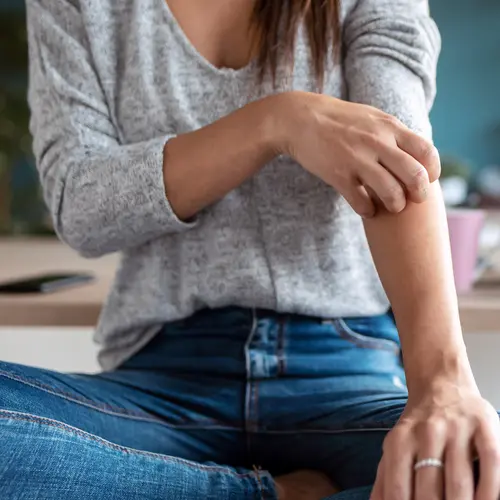What Is Guttate Psoriasis?
Guttate psoriasis is a type of psoriasis that shows up on your skin as red, scaly, small, teardrop-shaped spots. It doesn’t normally leave a scar. You usually get it as a child or young adult. Less than a third of people with psoriasis have this type. It’s not as common as plaque psoriasis.
It’s an autoimmune disease, meaning your body treats your own cells like invaders and attacks them. You might get it only once, or you could have several flare-ups. In some cases, this type of psoriasis doesn’t go away. With the help of your doctor, you can find a treatment to keep your symptoms under control.
Symptoms of Guttate Psoriasis
The spots you get from guttate psoriasis aren’t as thick as the ones from plaque psoriasis. You can sometimes have both kinds of psoriasis at once. You probably would get them on your arms, legs, and upper body.
It can sometimes spread from there to your face, ears, and scalp. But it doesn’t show up on your palms, the soles of your feet, or nails like other forms of psoriasis can. You’re more likely to have a flare-up during the winter, when the air is dry. Your symptoms may clear up more quickly in summer.
Stages of Guttate Psoriasis
There are three:
- Mild. Only a few spots cover about 3% of your skin.
- Moderate. Lesions cover about 3%-10% of your skin.
- Severe. Lesions cover 10% or more of your body and could cover your entire body.
The stage can also be based on how much they interfere with your daily life and activities. For example, psoriasis on your face or scalp can affect only 2%-3% of your total body surface area, but it could be classified as severe because it affects your appearance and livelihood. Psoriasis on your hands might only cover 2% total body surface area, but could affect your livelihood if you work with your hands. In that case it would be classified as moderate to severe.
Causes and Triggers of Guttate Psoriasis
An outbreak is usually triggered by a bacterial infection -- typically streptococcus (strep throat). It sets off an immune system reaction that causes the spots on your skin.
In some cases, guttate psoriasis is genetic. If someone in your family has it, your chances of getting it go up.
Other triggers include:
- Upper respiratory infections
- Sinus infections
- Flu
- Tonsillitis
- Stress
- Cuts, burns, or bites on your skin
- Some drugs you take (antimalarials and beta-blockers)
Diagnosis of Guttate Psoriasis
Your doctor will want to know your medical history, especially what kinds of medications you may be taking. They’ll look at your skin. Usually, a physical exam gives your doctor enough information to diagnose or rule out guttate psoriasis.
If they need more information, your doctor may take a blood sample or a throat culture to check for strep. It’s also common for doctors to perform a skin biopsy when they want to know for sure what you have.
Treatment for Guttate Psoriasis
In most cases, an outbreak of guttate psoriasis lasts 2 to 3 weeks. But your doctor may want to treat your symptoms and help prevent other infections in your body.
- Medications. There are several over-the-counter or prescription options for the itchy, flaky skin, as well as the dryness and swelling. They include:
- Cortisone cream for itching and swelling
- Dandruff shampoo for your scalp
- Lotions with coal tar to soothe your skin
- Moisturizers
- Prescription medicines with vitamin A
- If your case is more serious, your doctor may give you a prescription to take by mouth. These include:
- Corticosteroids
- Biologics (guselkumab, ixekizumab)
- Apremilast (Otezla)
- Deucravacitib (Sotyktu)
- Methotrexate
- Phototherapy. Also known as light therapy, this is another option. Your doctor will shine ultraviolet light onto your skin during this treatment. They may also give you medication to make your skin react more quickly to light. Sometimes, just going out into the sunshine can help.

